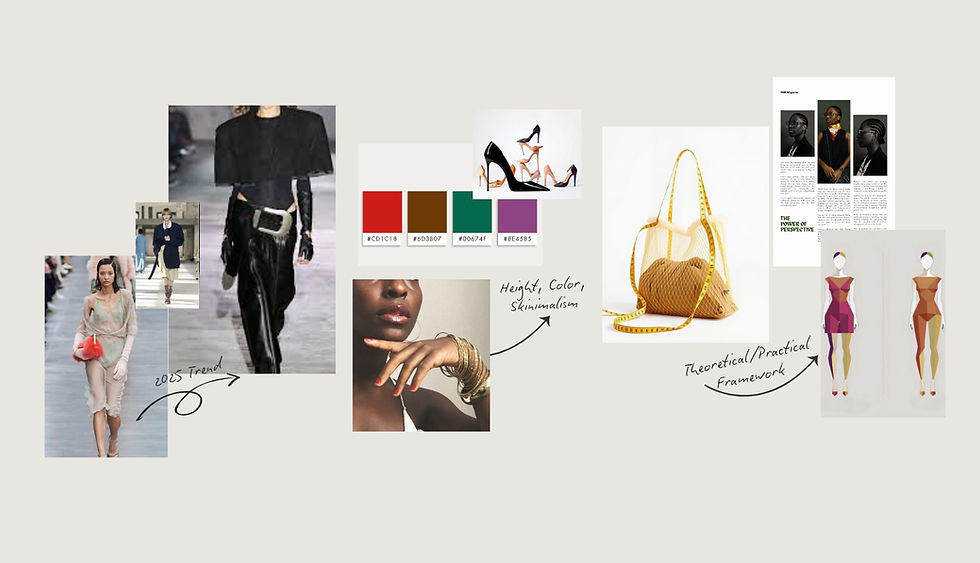Height × Size: The 2025 Representation Reality
- XIXE
- 7 hours ago
- 3 min read
Every fashion season now comes with detailed diversity audits. Designers, agencies, and analysts release inclusivity data that tracks progress across race, age, and gender representation. Yet the conversation around body diversity remains incomplete. Two measurements still operate independently in industry discourse: height and size.
While racial diversity has reached record levels across global fashion weeks, size inclusivity tells a different story. The industry's approach to body representation remains fragmented, addressing some dimensions of diversity while leaving others largely unchanged.
The Size Reality
The data from 2025 contradicts the narrative of linear progress. Mid and plus-size representation at New York Fashion Week declined from six percent in Spring/Summer 2025 to four percent by Fall/Winter 2025. Plus-size models now account for less than one percent of runway castings, dropping from 0.8 percent to 0.3 percent between seasons.
This represents backward movement in a category where modest gains had been celebrated just years earlier. The conversation shifted, but the castings did not follow.
The Height Gap

Height remains the least examined dimension of body representation. Industry standards continue to prioritize models between 5 feet 9 inches and 6 feet, a range that represents a small fraction of the general population. Models outside this bracket rarely appear on major runways, and when they do, their presence is often framed as novelty rather than standard practice.
The vertical range of fashion remains narrow, even as discussions of inclusivity expand horizontally. Height diversity is not tracked with the same rigor as size or race, leaving an entire dimension of representation unmeasured and largely unaddressed.
Design Implications
Height and proportion are foundational to garment construction. When fit models and sample production operate within a limited vertical spectrum, the technical process itself reinforces exclusion. Pattern drafting, grading systems, and silhouette testing all reflect assumptions about body height that shape how clothing is engineered from the start.
This is not deliberate exclusion but inherited structure. Fashion's production systems were built on standardization, and those standards have rarely been questioned. The result is a design pipeline that functions efficiently within its parameters but struggles to accommodate variation.
Adjustments at the Margins
Some brands have begun addressing these limitations at the production level. A handful of designers have introduced varied fit models and adapted their sampling processes to account for different body proportions. Others have developed flexible grading templates that allow for height variation without compromising design intent.
These changes remain exceptions rather than industry standard. They signal awareness but not yet transformation.
Outlook
Representation is expanding from being purely visual to becoming structural. Inclusivity now concerns not only who appears in campaigns but also who is considered during design development. Progress in one area does not guarantee progress in another.
The fashion industry has proven capable of incremental change. Racial diversity improved steadily over the past decade. Gender representation expanded gradually. But size and height diversity have not followed the same trajectory.
Summary
When fit models and runway presentations operate within a narrow 5'9"-6'0" range globally, the entire fashion production pipeline, from pattern drafting to proportion testing is calibrated for bodies that represent approximately 7% of the global female population, excluding the vast majority worldwide.
2025 revealed that body representation is not moving in a single direction. Some dimensions of diversity advanced. Others stalled or regressed. The next phase will require addressing the technical systems that shape who fashion is designed for, not just who it is shown on.



Comments